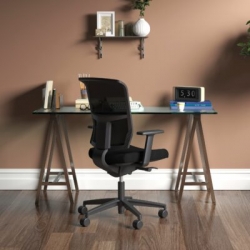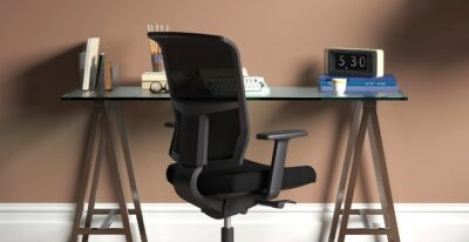October 30, 2020
Organisations shift attitudes on meeting costs of home office setup
 Eighty-two percent of US based employers now believe the organisation should absorb the cost of a home office setup for employees that work from home full-time. This is a dramatic increase over those who did so before COVID-19. These and other findings from The Future of Home Office Cost Sharing survey from Global Workplace Analytics and Design Public Group, will lead to profound changes in how companies procure and distribute technology and furniture, budget for workplaces, attract and retain talent, and manage safety risk, according to the report’s authors.
Eighty-two percent of US based employers now believe the organisation should absorb the cost of a home office setup for employees that work from home full-time. This is a dramatic increase over those who did so before COVID-19. These and other findings from The Future of Home Office Cost Sharing survey from Global Workplace Analytics and Design Public Group, will lead to profound changes in how companies procure and distribute technology and furniture, budget for workplaces, attract and retain talent, and manage safety risk, according to the report’s authors.
Not only do organizations feel responsible for absorbing the cost of a home office set-up for employees that work from home full-time, but they also feel responsible even when an employee is working from home 3 days/week (61 percent agree the organization is responsible), or even 1 day/week (23 percent agree). The survey captured sentiments around provisioning for home office technology, furniture, utilities, and more.
“Before COVID, employees who worked from home generally saw it as a privilege and didn’t expect their employer to cover their home office expenses,” says Kate Lister, president of Global Workplace Analytics. “The survey shows that sentiment has shifted during the pandemic.”
“I think three factors are at play here. First, working from home is no longer a matter of choice. Second, it’s one thing to sit in an uncomfortable chair or work with just one monitor when you are used to having two when you’re doing it one or two days a week, it’s another thing altogether when you’re doing it every day for months on end. Finally, the demographics of who’s working from home have shifted from mostly high income older workers before COVID-19, to the full range of income classes during it and those with lower incomes simply can’t afford ergonomic or upgraded technology solutions.”
Other findings:
- The shift to work from home is definitely here to stay. Only 5 percent of companies expect a return to normal when the pandemic is over. Nearly half of companies have already announced a more permanent shift to work from home post-COVID.
- Nearly 25 percent of organizations expect 75 percent+ of their workforce to work from home 3+ days/week post-COVID. Twenty-two percent are still undecided.
- Most companies have already provided technology such as a laptop (92 percent), webcam (68 percent) and 2nd monitor (54 percent) for employees’ home offices. Next, companies are considering providing a chair (41 percent considering) and desk (31 percent considering).
- Nearly half of respondents said they were unaware of the worker’s comp and health insurance liabilities of not providing employees with an ergonomic home office.
“Leading employers are already thinking about the need for good ergonomics at home and I suspect it won’t be long before others look to the economics of it just as they have in the office,” says Lister. The fact is they could pay for over 350 ergonomic office chairs for the cost of one workers compensation claim.”
“At the start of the pandemic, nobody really had a plan or policy regarding home office expenses,” says Matthew Lieb, Owner and CEO of Design Public Group. “Many reacted quickly by letting employees take their office set-ups home or offering stipends via paychecks without much oversight into how or where they’re spent. But what we’re seeing now is a realization among employers that it’s in their best interest to ensure employees have a set-up that’s designed with employee health, safety, and productivity in mind.”




















